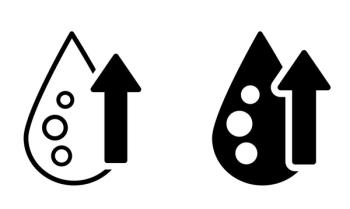
Cardiovascular Disease in Women: New Guidelines Stress Prevention
Every minute, an American woman dies of cardiovascular disease (CVD), the leading cause of death among women in the United States. Each year, more than half a million women die of cardiovascular causes, including 250,000 of coronary heart disease.Despite the prominent reduction in cardiovascular mortality in the United States among men, mortality has not decreased recently among women. Since 1984, CVD has killed more American women than men every year.1,2
Every minute, an American woman dies of cardiovascular disease (CVD), the leading cause of death among women in the United States. Each year, more than half a million women die of cardiovascular causes, including 250,000 of coronary heart disease.Despite the prominent reduction in cardiovascular mortality in the United States among men, mortality has not decreased recently among women. Since 1984, CVD has killed more American women than men every year.1,2
Coronary disease is not solely a disease of older women: 9000 women younger than 45 years have a myocardial infarction (MI) each year. Furthermore, the mortality associated with acute MI among women younger than 65 years is almost twice as high as among men. In addition, mortality from coronary artery bypass graft surgery-particularly among younger women-is double that among men.
Recent reports that show menopausal hormone therapy fails to provide cardiac protection have refocused attention on lifestyle and drug therapies documented to prevent cardiovascular and coronary disease in women. These therapies are delineated in new guidelines developed by the American Heart Association and 11 cosponsoring health care organizations and endorsed by numerous health care and women's organizations.3 Highlights of these guidelines are provided here.
The recently released guidelines are likely to have 2 major favorable consequences. First, they will not only increase women's awareness of the importance of heart disease, but they will allow women to personalize their cardiovascular risk. Although today more women know about preventive interventions for cardiovascular protection, a disappointingly small percentage have translated this knowledge into action.
Second, the guidelines should serve to refocus the patterns of clinical practice to address the unique preventive, diagnostic, and management needs of women. The simultaneous presentation of these guidelines to women and to their health care providers-coupled with the American Heart Association's Go Red for Women campaign-emphasizes the importance of women as partners with their health care providers.
An important feature of the guidelines is the strength of the recommendations. They are classified according to efficacy and the quality of the evidence documenting this efficacy. Moreover, there is an index of generalizability of the data to women, because many of the studies were performed predominantly or exclusively in populations of men. The evidence for these guidelines was derived from women who participated in clinical research studies. In my view, all of these participants are heroines, because only they can provide the information subsequently used to guide the heart health of women.
A CONTINUUM OF RISK
A primary aim of the new guidelines was to develop a set of recommendations for the prevention of CVD in women aged 20 years and older with a broad range of cardiovascular risks. To that end, the concept of CVD as a categoric entity has been replaced by the notion of a continuum of CVD risk (Table 1). This concept allows clinicians to stratify women according to baseline level of risk and gauge the level of intervention accordingly.
Recommendations were grouped into the following categories: lifestyle interventions, major risk factor interventions, and preventive drug interventions. In addition, a number of interventions were classified as "not recommended."
LIFESTYLE INTERVENTIONS
This group of interventions (Table 2) received a Class 1 recommendation (that is, they are considered useful and effective). Lifestyle interventions include such measures as smoking cessation, regular physical activity, a heart-healthy diet, and weight maintenance/reduction for all women. Not only may healthy lifestyle patterns reduce the risk of clinical CVD, but they may prevent the development of major risk factors for CVD and thus reduce the need for more intensive intervention in the future.
The guidelines point out that although fish consumption has been associated with a reduced risk of CVD (at least in part because fish contains relatively high amounts of omega-3 fatty acids), women of childbearing age, especially pregnant women, should avoid shark, swordfish, king mackerel, and tilefish because of their relatively high mercury content. Other kinds of fish- including catfish, flounder, and salmon-have less mercury. Women who do not eat fish can consider nonmarine sources of omega-3 fatty acids, including flaxseed oil, walnut oil, canola oil, soybean oil, and walnuts. However, there is less evidence to support a cardiovascular benefit from these sources.
MAJOR RISK FACTOR INTERVENTIONS
These include lifestyle changes and/or pharmacotherapy to reduce blood pressure and elevated total and low-density lipoprotein cholesterol (LDL-C), as well as to achieve near-normal glycosylated hemoglobin (HbA1c) (Table 3). Lifestyle approaches to achieve optimal blood pressure include appropriate dietary habits, weight management, dietary sodium reduction, physical activity, and moderation of alcohol consumption.
LDL-C is the primary target of lipid-lowering therapy; intensity of therapy should be matched to the patient's risk profile. Lifestyle intervention has been shown to reduce the incidence of diabetes; treatment of hyperglycemia reduces or delays such complications of diabetes as retinopathy, nephropathy, and neuropathy.
PREVENTIVE DRUG INTERVENTIONS
These interventions are summarized in Table 4. Although the use of aspirin (75 to 162 mg/d) is recommended in high-risk women, the evidence for use in women at lower risk is less clear, primarily because of the lack of data from primary prevention trials that included women and uncertainty about extrapolating from data on men. Aspirin may increase the risk of hemorrhagic stroke in women with uncontrolled hypertension; aspirin also poses a risk of GI bleeding and other adverse effects. NSAIDs are not an appropriate substitute for aspirin in CVD prevention. For women with atrial fibrillation, warfarin is the primary therapy for stroke prevention. Aspirin, 325 mg/d, is recommended if warfarin is contraindicated or if the risk of stroke is considered low (less than 1% annual event rate per year).
INTERVENTIONS NOT RECOMMENDED
Recent clinical trials have shown that several interventions showed no benefit for CVD prevention and might have adverse effects. These include:
Postmenopausal hormone replacement therapy. The panel recommends that combined estrogen plus progestin therapy not be initiated or continued to prevent CVD in postmenopausal women. Other forms of hormone therapy (eg, unopposed estrogen) should not be initiated or continued to prevent CVD in postmenopausal women pending the results of ongoing trials.
Antioxidant supplements. Pending the results of ongoing trials, antioxidant vitamin supplements are not recommended for CVD prevention.
Aspirin therapy. Pending the results of ongoing trials, the routine use of aspirin is not recommended for lower-risk women (10-year absolute coronary heart disease risk of less than 10%). n
References:
REFERENCES:
1. American Heart Association. Heart Disease and Stroke Statistics-2003 Update. Dallas: American Heart Association; 2002.
2. Yusuf S, Reddy S, Ounpuu S, et al. Global burden of cardiovascular diseases, I: general considerations, the epidemiologic transition, risk factors, and impact of urbanization. Circulation. 2001;104:2746-2753.
3. Mosca L, Appel LJ, Benjamin EJ, et al. Evidence--
based guidelines for cardiovascular disease prevention in women. Circulation. 2004;109:672-693.
Newsletter
Enhance your clinical practice with the Patient Care newsletter, offering the latest evidence-based guidelines, diagnostic insights, and treatment strategies for primary care physicians.

















































































































































































































































































